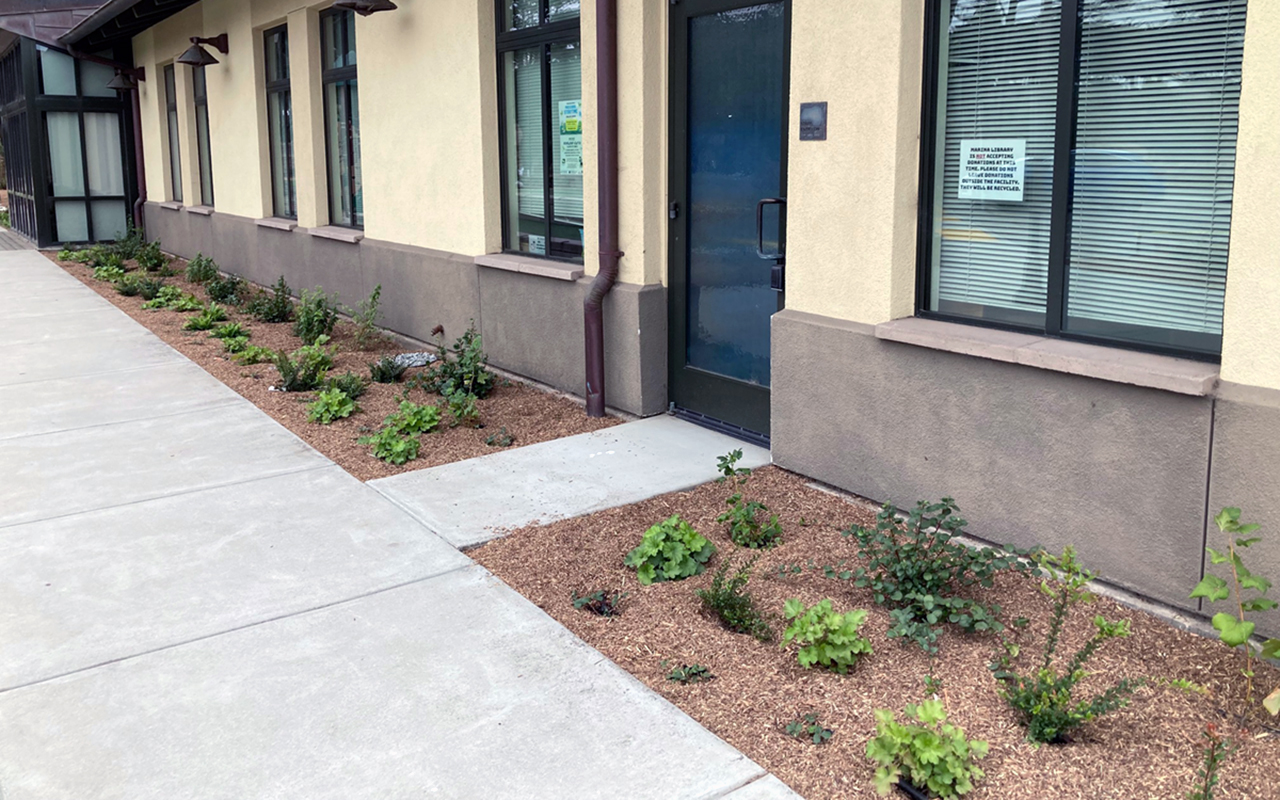
Marina Library Plant List
Marina Library Landscape Project is growing!
The planting at the Marina Library had several challenges specific to the site. These issues included no working irrigation, poor soil and deep building shade. For these reasons it was important to improve the soil, select Native plants that would be able to tolerate deep shade, and, work with the city to replace the irrigation, before any planting began
This list reflects the combined plant knowledge of club members Donna Hardy, Grace Silva-Santella and Juli Hofmann with discussions across a kitchen table to find consensus on hardy perennials that would do well in the library building shade and Marina climate.
Library Landscape Plant List – downloadable pdf here
- Berberis aquifolium – Oregon Grape *
(some nurseries still use the older genus Mahonia) - Fragaria chiloensis – Wild Strawberry
- Holodiscus discolor – Ocean Spray *
- Heuchera maxima – Island Alum Root
- Ribes sanguineum ‘Claremont’ – Red Flowering Currant
- Ribes viburnifolium – Catalina Currant *
- Vaccinium ovatum – ‘Native Star’ – Huckleberry

- Blechnum spicant – Deer tongue fern
- Polypodium scouleri ’KT Ridge’ – Leatherleaf fern
- Woodwardia fimbriata – Giant Chain fern
- Dendromecon harfordii – Channel Islands Tree Poppy
- Gambelia speciosa ‘Firecracker’ – Island Snapdragon
(some nurseries still use the older genus Galvezia) - Eriogonum – Buckwheats
- Lotus scoparius – Common Deer Weed
- Clinopodium douglasii – Yerba Buena
- Iris douglasiana – Pacific Coast Iris
- Frangula californica ‘Mound San Bruno’ – coffeeberry
(some nurseries still use the older genus Rhamnus) - Gambelia speciosa ‘Firecracker’ – Island Snapdragon
(some nurseries still use the older genus Galvezia) - Romneya coulteri – Matilija Poppy
